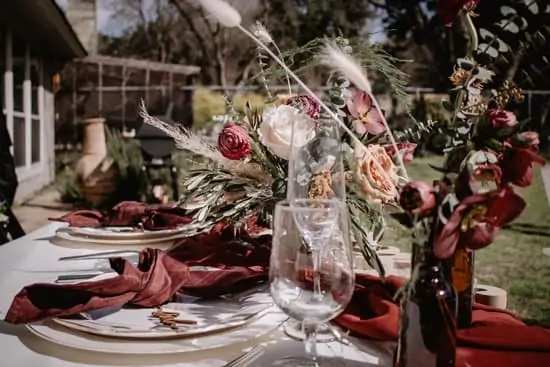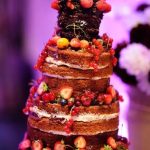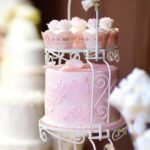When it comes to decorating a birthday cake, sugarpaste is undoubtedly the ideal medium to work with. This versatile and easy-to-use material offers endless possibilities for creating stunning designs and adding personal touches to any cake. In this article, we will explore why sugarpaste is the perfect choice for decorating birthday cakes and provide you with all the essential information and techniques you need to create your own masterpiece.
Sugarpaste, also known as fondant or rolled icing, is a pliable icing made primarily of sugar, water, and sometimes gelatin. It can be rolled into smooth sheets and molded into various shapes, allowing for intricate designs and patterns on cakes. Unlike other decorating options such as buttercream or royal icing, sugarpaste provides a flawless finish that creates a polished and professional look.
One of the main advantages of using sugarpaste is its versatility. It can be easily colored to match any theme or occasion using gel-based or natural food dyes. Additionally, flavored extracts or oils can be added to enhance the taste of the sugarpaste itself. With sugarpaste, you have complete control over both the appearance and flavor of your cake decorations.
In the following sections of this article, we will guide you through the entire process of decorating a birthday cake with sugarpaste. From gathering essential supplies to finishing touches that take your decoration to the next level, we will cover everything you need to know in order to create a stunning and personalized cake for any celebration. Let’s dive in.
Gathering the Essential Supplies for Sugarpaste Cake Decoration
When it comes to decorating a birthday cake with sugarpaste, gathering the essential supplies is crucial for achieving professional-looking results. Here is a detailed list of all the necessary tools and materials required for this type of cake decoration:
- Sugarpaste: The star of the show, sugarpaste is the primary medium used to cover and create decorations for the cake. It is made from sugar and can be rolled out like dough. You will need enough sugarpaste to cover the entire cake as well as extra for decorations.
- Rolling Pin: A good quality rolling pin is essential for rolling out the sugarpaste to the desired thickness. It should have a smooth surface and be long enough to cover the width of your cake.
- Cake Smoother: A cake smoother helps in achieving a smooth and even surface when covering the cake with sugarpaste. It is used to remove any air bubbles or wrinkles and gives a polished finish.
- Fondant Mat or Non-Stick Surface: A fondant mat or non-stick surface is necessary for rolling out sugarpaste without it sticking to your countertop or table. It makes it easier to transfer the rolled-out sugarpaste onto the cake.
- Cake Leveler: To ensure a flat top surface, a cake leveler is useful for trimming off any dome-shaped tops of layered cakes before applying the sugarpaste.
- Edible Glue: Edible glue is used to attach different elements made from sugarpaste onto the cake. It helps secure flowers, shapes, and other decorations in place without leaving any visible marks.
- Modeling Tools: These tools are designed specifically for working with sugarpaste and help create intricate designs and patterns on cakes. They include ball tools, veining tools, cutters, and embossers.
- Food Coloring: Gel-based food colors are recommended for coloring sugarpaste as they do not alter the consistency of the paste. A variety of colors is essential for creating different shades and hues.
- Flavor Extracts: Adding flavor extracts or oils to sugarpaste can enhance the taste of the cake. Popular flavors include vanilla, almond, lemon, and strawberry.
Once you have gathered these essential supplies, you will be well-equipped to embark on your sugarpaste cake decorating journey. High-quality tools and materials are key to achieving professional results and making your birthday cake truly spectacular. Don’t forget to reference reliable sources or online retailers for top-notch products to ensure that your cake decorating experience is a success.
Preparing the Cake for Sugarpaste Decoration
Before diving into the exciting process of decorating a birthday cake with sugarpaste, it is essential to properly prepare the cake to ensure a smooth surface for decoration. This section will provide step-by-step instructions on how to level and prepare the cake, as well as tips for achieving an even and flawless surface.
Step 1: Leveling the Cake
To create a stable foundation for sugarpaste decoration, it is crucial to level the cake layers. Start by placing the cooled cake on a flat surface and using a serrated knife or cake leveler to remove any domes or uneven surfaces. Carefully cut off any excess until you have an even and flat top. Repeat this process for all layers of your cake.
Step 2: Crumb Coating
Once your cake is leveled, it’s time to apply a crumb coat, which helps seal in any loose crumbs and provides a smooth base for the sugarpaste. Begin by applying a thin layer of frosting or buttercream all over the cake using an offset spatula or palette knife.
Make sure to cover both the top and sides of the cake. The crumb coat does not need to be perfect; its purpose is just to create a barrier between the sugarpaste and cake crumbs.
After applying the crumb coat, refrigerate the cake for about 15-30 minutes, allowing it to firm up before moving on to applying the sugarpaste.
Step 3: Preparing your Work Surface
While your crumb-coated cake chills in the fridge, prepare your work surface. Dust your countertop or pastry mat lightly with cornstarch or powdered sugar to prevent sticking when rolling out your sugarpaste.
Step 4: Applying Sugarpaste onto Cake
Remove the chilled cake from the fridge and ensure it is dry to the touch. Take your sugarpaste and roll it out to a thickness of about 1/4 inch. Gently lift the rolled-out sugarpaste using a rolling pin or your hands, making sure not to stretch or tear it.
Carefully drape the sugarpaste over the cake, starting from the center and working your way out to the edges. Smooth down the sides of the cake, gently pressing against it to adhere the sugarpaste smoothly.
Step 5: Trimming Excess Sugarpaste
Once you’ve securely covered your cake with sugarpaste, trim off any excess using a sharp knife or pizza cutter. Be cautious not to cut into the cake itself. By removing the excess sugarpaste, you’ll achieve crisp edges and a neat finish on your decorated cake.
Following these steps for preparing your cake will provide an excellent foundation for decorating with sugarpaste. With a flat and smooth surface ready to work on, you can now move on to adding color, creating intricate designs, and personalizing your masterpiece with sugarpaste decorations.
Coloring and Flavouring Sugarpaste
Coloring and flavoring sugarpaste is an important aspect of decorating birthday cakes. This section will provide various techniques for adding color and flavor to sugarpaste, allowing decorators to customize their creations to match any theme or taste preference.
Adding Color
There are several methods for coloring sugarpaste, depending on the desired result. Gel-based food dyes are a popular choice as they offer vibrant colors and can be easily mixed to achieve custom shades.
To use gel-based food dyes, simply add a small amount at a time to the sugarpaste and knead until the desired color is achieved. It’s important to start with a small amount of dye and gradually add more as necessary to avoid overpowering the sugarpaste.
For those who prefer natural food dyes, there are also options available. Natural food dyes derived from vegetables or fruits can be used to achieve muted, earthy tones. These can be either store-bought or homemade by pureeing fruits or vegetables and straining them through a fine mesh sieve. The resulting liquid can then be added to the sugarpaste in small increments until the desired color is reached.
Flavorful Enhancements
While sugarpaste is typically known for its decorative purposes, it can also impart subtle flavors to the cake. Adding flavored extracts or oils can elevate the taste of both the cake and the sugarpaste itself. To incorporate flavor into sugarpaste, simply knead in drops of extract or oil until evenly distributed. Vanilla extract is a classic choice, but other flavors such as almond, lemon, or coconut can also be explored for unique combinations.
Another option for adding flavor is rolling out a thin layer of marzipan before applying the sugarpaste. Marzipan has a distinct almond flavor that complements many cake flavors beautifully while simultaneously providing additional moisture.
By utilizing these coloring and flavoring techniques, decorators can turn a simple sugarpaste-covered cake into a personalized masterpiece that not only looks stunning but also tastes delicious. The possibilities for customization are endless, allowing for creativity and experimentation in the world of sugarpaste cake decoration.
Rolling Out the Sugarpaste and Covering the Cake
Once you have gathered all your essential supplies and prepared the cake, it’s time to roll out the sugarpaste and cover the cake. This step is crucial in achieving a smooth and flawless finish on your decorated birthday cake. Here are some detailed instructions and tips to help you through this process:
- Roll out the Sugarpaste: Start by dusting your work surface with a small amount of icing sugar or cornstarch to prevent sticking. Take a portion of sugarpaste and knead it until it becomes pliable. Using a rolling pin, roll out the sugarpaste into a circular shape large enough to cover the entire cake.
- Prevent Air Bubbles and Wrinkles: To prevent air bubbles, gently lift the rolled-out sugarpaste using rolling pin or your hands, then drape it over the cake ensuring there are no air pockets trapped underneath. Smooth the sugarpaste onto the surface of the cake using gentle but firm strokes from top to bottom, working your way around the cake.
- Achieve a Flawless Finish: Once you have covered the entire cake with sugarpaste, use a smoother or your hands to gently press down any wrinkles or imperfections on the surface of the cake. Smooth out any excess sugarpaste at the base of the cake to create clean edges.
| Step | Description |
|---|---|
| 1 | Knead sugarpaste until pliable. |
| 2 | Dust work surface with icing sugar or cornstarch. |
| 3 | Roll out sugarpaste into a circular shape. |
| 4 | Drape rolled-out sugarpaste over cake, avoiding air bubbles. |
| 5 | Smooth sugarpaste onto the surface of the cake. |
| 6 | Gently press down any wrinkles or imperfections. |
Once you have successfully rolled out the sugarpaste and covered the cake, you can move on to the next steps of decorating with sugarpaste. Remember to take your time and work carefully to achieve a professional-looking finish. With practice, you’ll be able to create beautifully decorated birthday cakes using sugarpaste.
Creating Intricate Designs and Patterns with Sugarpaste
Sugarpaste is not only an excellent medium for covering cakes, but it also provides endless possibilities for creating intricate designs and patterns. Whether you’re looking to make sugarpaste flowers, ruffles, or bows, there are step-by-step tutorials and pro tips to help you achieve professional-looking decorations.
One popular technique for creating sugarpaste flowers is to use flower cutters and veiners. These tools allow you to create realistic-looking flowers by cutting the petals out of sugarpaste and then adding texture using the veiner. This technique works well for a variety of flowers such as roses, daisies, and lilies. By varying the size, color, and arrangement of these sugarpaste flowers, you can create stunning floral designs on your cake.
Another technique that can add a touch of elegance to your cake is making ruffles with sugarpaste. Ruffles can be created by rolling out a thin strip of sugarpaste and then gathering or pleating it to create a textured effect. These ruffles can be placed along the edges of the cake or used to create beautiful cascading layers for a more dramatic effect.
If you’re looking for something fun and playful, consider making sugarpaste bows. Bows can be made by shaping loops out of sugarpaste strips and securing them in the center with another piece of sugarpaste. These bows can be placed strategically on top of the cake or used as decorative elements around the sides.
When creating intricate designs with sugarpaste, it’s important to have patience and practice. Start with simpler designs before moving on to more complex ones. Remember to take your time and carefully follow tutorials or guides until you feel confident in your skills. With practice, you’ll soon be able to create stunning designs that will impress both yourself and others.
To showcase your sugarpaste masterpiece and inspire others, consider sharing photos of your finished cake on social media. Don’t forget to tag relevant accounts or use specific hashtags related to cake decorating. By sharing your creations, you can connect with a community of fellow sugarpaste enthusiasts and gain valuable feedback and inspiration for future projects.
Overall, decorating with sugarpaste allows you to unleash your creativity and transform an ordinary cake into a work of art. With the right techniques and practice, you can create intricate designs and patterns that will impress everyone who sees your cake. So go ahead, experiment with different techniques, and have fun bringing your sugarpaste decorations to life.
Adding Personalized Messages or Names with Sugarpaste
One of the wonderful things about decorating a birthday cake with sugarpaste is the ability to personalize it with messages or names. Adding a special touch like a personalized message can truly make the cake feel unique and meaningful. Here are some creative ideas for incorporating personalized messages or names on the cake using sugarpaste:
- Making Letters or Shapes: One of the simplest ways to add a personalized touch is by creating letters or shapes with sugarpaste. Use alphabet-shaped cutters to spell out names, initials, or birthday greetings. You can also create shapes that relate to the theme of the celebration, such as hearts, stars, or animals.
- Embossed Messages: Another technique to consider is embossing messages directly onto the sugarpaste. Roll out a strip of sugarpaste and use letter embossers or small shaping tools to imprint your desired words onto it. Carefully position the strip on the cake and secure it in place.
- Edible Image Toppers: If you’re looking for a more professional-looking result, consider getting edible image toppers made with personalized images, photos, or messages. These can be easily applied on top of sugarpaste-covered cakes for a flawless finish.
Remember to plan ahead when adding personalized messages using sugarpaste. Making sure you have all necessary supplies beforehand will help ensure smooth execution and avoid any last-minute stress.
Finishing Touches and Tips to Take Your Sugarpaste Decoration to the Next Level
After successfully covering your cake with sugarpaste, it’s time to add those finishing touches that will truly make your creation shine. To elevate your sugarpaste decoration, consider incorporating additional decorative elements such as edible pearls, glitter, or dragees. These small details can make a big impact and add elegance and glamour to your cake.
One way to enhance the overall design of your cake is by creating texture, dimension, and depth in your sugarpaste decorations. You can achieve this by using different techniques such as embossing, molding, or ruffling the sugarpaste. Embossing tools can be used to create intricate patterns on the surface of the sugarpaste while molding tools allow you to shape sugar flowers or other decorative elements. Ruffling involves adding delicate waves or frills to the sugarpaste for a more whimsical effect.
When applying these techniques, it’s important to take care not to overload your cake with too many decorations. Less is often more when it comes to sugarcraft. Be sure to step back and assess if any additions are necessary or if they may overcrowd the design. A simple but well-executed decoration can have a stronger impact than an overly complicated one.
Lastly, maintaining the freshness of your sugarpaste-decorated cake is crucial. To do so, store it properly in a cool and dry place away from direct sunlight or heat sources. Avoid refrigerating cakes decorated with sugarpaste as condensation can cause damage and ruin the design.
By following these tips for finishing touches and upkeep, you can take your sugarpaste decoration skills even further and create stunning cakes that will impress both aesthetically and taste-wise. Remember that practice makes perfect, so don’t be afraid to experiment with different techniques and let your creativity soar.
Conclusion
In conclusion, decorating a birthday cake with sugarpaste offers a world of creativity and possibilities. With its versatility, ease of use, and ability to create intricate designs and patterns, sugarpaste is the perfect choice for cake decoration. By following the step-by-step instructions provided in this article and gathering the essential supplies, anyone can create a stunning sugarpaste-decorated cake.
Once your masterpiece is complete, it’s important to showcase it and inspire others to explore the art of sugarpaste decoration. Social media platforms can be an excellent way to share photos of your finished cake and connect with other cake decorators. Consider tagging relevant social media accounts or using hashtags to increase visibility and engage with a wider community.
Decorating with sugarpaste is truly a joyful experience. Not only does it allow you to unleash your creativity and bring beautiful designs to life, but it also enhances the taste of the cake with its flavored options. The possibilities are endless when it comes to color choices, personalized messages, and decorative elements like edible pearls or glitter.
Frequently Asked Questions
How do you stick Sugarpaste to a cake?
To stick sugarpaste, also known as fondant, to a cake, there are a few steps you can follow. First, ensure that the cake is completely cooled down and at room temperature. Apply a thin layer of buttercream or ganache on the surface of the cake as a base for the sugarpaste to adhere to. This creates a smooth surface for better adherence.
Dust your work surface with icing sugar to prevent sticking and roll out the sugarpaste into a thin, even layer with a rolling pin. Carefully lift the sugarpaste using your rolling pin and drape it over the cake. Gently smooth out any air bubbles or wrinkles using your hands or a fondant smoother, starting from the top and working your way down. Trim any excess sugarpaste from the bottom of the cake using a sharp knife or pizza cutter.
How to decorate a birthday cake with fondant?
Decorating a birthday cake with fondant can be a fun and creative process. Start by preparing your cake with buttercream or ganache as mentioned earlier to create a smooth surface. Then, knead your fondant until it becomes soft and pliable. Roll out the fondant on an icing sugar-dusted surface into a large enough size to cover the entire cake’s surface.
Place it gently on top of the cake and smooth it down using your hands or a fondant smoother to eliminate any air pockets or creases. Once securely attached, you can begin decorating with additional colored fondants for shapes like flowers or characters by cutting them out with cookie cutters or shaping them by hand. Use edible glue made of water and tylose powder if needed to attach smaller fondant decorations onto the main piece.
How do you put fondant on a cake for beginners?
Putting fondant on a cake may seem intimidating for beginners, but it is actually quite manageable with some patience and practice. Before applying the fondant, make sure that your cake is evenly covered in buttercream frosting all around its sides and top. This will help the fondant stick and create a smooth base. Knead your fondant until it is soft and pliable, then roll it out on an icing sugar-dusted surface to the desired size, making sure it is slightly larger than your cake size.
Carefully lift the rolled-out fondant using a rolling pin or by folding it over itself without stretching it too much, then gently drape it over the cake. Smooth out any creases or air bubbles by using your hands or a fondant smoother, starting from the top and moving down to the sides. Trim off any excess fondant at the base of the cake using a sharp knife or pizza cutter for a clean finish. Remember, practice is key, so don’t be discouraged if your first attempt isn’t perfect – just keep experimenting!

Welcome to our cake decorating blog! My name is Destiny Flores, and I am the proud owner of a cake decorating business named Cake Karma. Our mission is to provide delicious, beautiful cakes for all occasions. We specialize in creating custom cakes that are tailored specifically to each customer’s individual needs and tastes.





